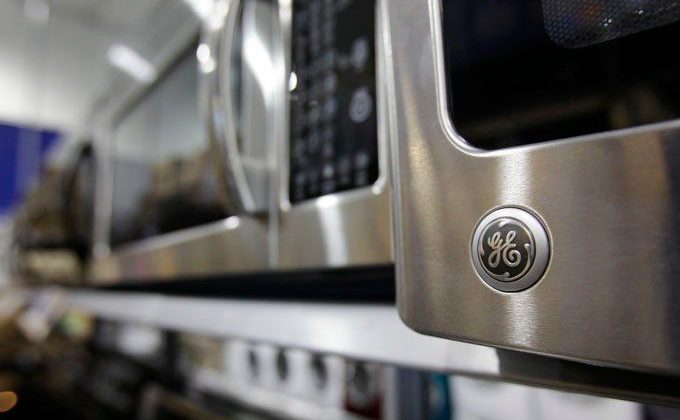
General Electric Co. (NYSE : GE) is the oldest component of the Dow Jones Industrial Average, having joined the index in 1896. It long ago outlived its then-contemporaries, bygone companies like National Lead and Standard Rope & Twine. Today, GE remains one of the few true conglomerates, with its fingers in multiple unrelated industries, everything from health care to aviation to its traditional businesses of appliances and lighting.
It is for that reason that many of its investors think the time has come for GE to do the honorable thing and break into multiple companies, each with its own economies of scale. Some dissatisfied shareholders think that might be the next logical step for a company whose commitment to diversity may finally have stretched it too thin.
GE Sell-Offs Brought More Splits
In recent times, GE has been an entertainment company, a computer maker and a heavy industry manufacturer. Today it is only the last of those, in addition to running several other businesses with differing ranges of profitability. To investors impatient with the movement of GE’s stock price, the obvious resolution would be to sell off the least profitable businesses and keep the highest-margin ones. The interconnectedness of those businesses is just one of the reasons why that would not be as easy as it might sound.
GE stock hit bottom in March of 2009, falling below $6 a share and irking investors who had become accustomed to the meteoric, if anomalous, growth of the previous decade. At the time, those investors began to call for the company to spin off some valuable, though troublesome, assets, and by and large, GE met the demands. Last year the company divested itself of its half-ownership stake in NBCUniversal, the parent company of the NBC television network and its various sister networks (CNBC, MSNBC et al.) Yet upon selling that stake to Comcast Corp.(Nasdaq:CMCSA), the company did the opposite of consolidating, going from four divisions to eight separate business segments.
First, GE’s Energy division split into three – Oil & Gas, Power & Water and Energy Management (GE-speak for “electrification.”) The businesses that remain are Aviation, Capital, Health Care, Home and Business Solutions (i.e. dishwashers, refrigerators and light bulbs), and Transportation. Those businesses range from low- to high-margin, with the bread-and-butter of Home and Business Solutions bringing up the rear.
Past vs. Profits: What Should GE Dump?
Jeff Immelt, the CEO who had to contend with the laments of those unhappy shareholders, did not categorically deny last year that at least one GE business might, perhaps, be on the block. That would be GE Capital, which lends money for corporations needing to buy company aircraft, health care providers looking for buildings, businesses requiring lines of credit and even medical patients who want to pay for minor surgery with the equivalent of a credit card. GE has said it plans to spin off the consumer lending part of GE Capital, which issues store credit cards to 55 million consumers, sometime in 2014. The business, renamed Synchrony Financial, earned about $2.1 billion in 2014.
There is one slight problem: Even though its volume has declined since the late-2000s worldwide financial crisis, GE Capital makes by far the most money of any GE business. In 2013 GE Capital was responsible for more than one-third of GE’s gross profit. Here’s the breakdown by segment, in millions of dollars:
|
Capital |
8258 |
|
Power & Water |
4992 |
|
Aviation |
4345 |
|
Healthcare |
3048 |
|
Oil & Gas |
2178 |
|
Transportation |
1166 |
|
Appliances & Lighting |
381 |
|
Energy Management |
110 |
The numbers above do look somewhat different when expressed in terms of profit margin percentage, rather than mere raw profit:
|
Power & Water |
20 |
|
Aviation |
20 |
|
Transportation |
20 |
|
Capital |
19 |
|
Healthcare |
17 |
|
Oil & Gas |
13 |
|
Appliances & Lighting |
5 |
|
Energy Management |
1 |
It would seem that if anything, there ought to be calls to spin off the two businesses that appear at the bottom of both charts and forever disengage GE from the markets it has long been identified with. After all, the remaining businesses that comprise the bulk of GM’s earnings clearly dwarf its consumer products efforts. GE Healthcare, for instance, employs 56,000 people and reported earnings of $3.9 billion in 2019.
Meanwhile, GE Aviation puts up similar numbers in the creation of aircraft engines. These are hard, tangible business sectors that provide obvious value for customers and for shareholders. GE Aviation, Capital, Healthcare and Transportation businesses (the last makes locomotives, mining equipment and marine diesel engines) might be dissimilar, but which one(s) do you sell off? And whatever for?
Conglomeration might no longer be as fashionable as it was a generation or two ago, but it seems the arguments for splitting GE into multiple companies have little or no justification if profit is what you happen to care about. Regarding the big picture, earnings per share have shown steady progress over each of the last five years.
The Bottom Line
Since talk of a breakup began to reach full volume in the mid-2000s, GE has largely corrected itself under Immelt’s tutelage. The stock’s price has risen methodically since its 2009 nadir. GE shares currently trade in the $25 range, which is still less than half of its pronounced peak of 2000 (and 40% less than its localized summer 2007 peak.) In Immelt’s 13th year at GE’s helm, and despite some outsiders recommending that he exit the consumer market altogether, it seems evident that the company can still manage to successfully meld disparate parts into one cohesive and ultimately profitable whole.
